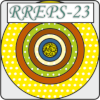Speaker
Description
Optical beam diagnostics is widely used to measure both transverse and longitudinal bunch sizes. In latter case a streak camera can provide time resolution of about 1 ps if the light intensity would be high enough. In photon counting devices a silica aerogel with refraction index of $n(\lambda)=1.05$ is used as a Cherenkov radiator. A complicated optical scheme should be used to transport and detect Cherenkov light in this case. Another disadvantage is a low photon yield due to small $n(\lambda)$.
There is an alternative way to generate intense light from a radiator with high optical density by a streak camera placed at a right angle relative to the electron beam. One can use a tilted transparent plate orientated such that the light (Cherenkov radiation, ChR, or optical transition radiation, OTR) is extracted towards the streak camera screen [1].
We investigated ChR and OTR generated by 70 MeV electrons in corundum plate with thickness of 0.5 mm using a CCD camera (Apogee Alta U30) [2], placed at 90 degrees relative to the beam trajectory. The target orientation for ChR measurements was $\psi = 24$ deg (“passage” geometry), but for OTR registration we used “mirror reflection” geometry ($\psi$ = - 45 deg). We have measured the photon yield in visible range for both cases and have obtained that OTR yield 5 times higher than the ChR one. This result strongly contradicted with the TR theory developed in [3] for a transparent plate. According to [3], in our case the ChR intensity should be at least 2 orders of magnitude higher than the OTR.
In this report, we propose to use transparent radiators such as corundum or CVD diamond for bunch length diagnostics.
This study was supported by the Russian Ministry of Science and Higher Education, project No FSWW-2023-0003.
- A.P. Potylitsyn et al. Phys.Lett. A 417, 127680 (2021)
- A.V. Vukolov et.al. PEPAN (in press)
- V.E. Pafomov. Proc. P.N. Lebedev Phys.Inst., 44, 25 – 157 (1971)
